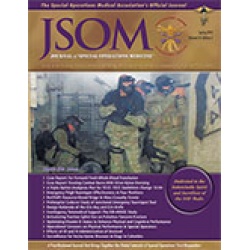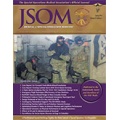A Triple-Option Analgesia Plan for Tactical Combat Casualty Care: TCCC Guidelines Change 13-04
Butler FK, Kotwal RS, Buckenmaier CC, Edgar EP, O'Connor KC, Montgomery HR, Shackelford S, Gandy JV, Wedmore I, Timby JW, Gross K, Bailey JA 14(1). 13 - 25 (Journal Article)
Although the majority of potentially preventable fatalities among U.S. combat forces serving in Afghanistan and Iraq have died from hemorrhagic shock, the majority of U.S. medics carry morphine autoinjectors for prehospital battlefield analgesia. Morphine given intramuscularly has a delayed onset of action and, like all opioids, may worsen hemorrhagic shock. Additionally, on a recent assessment of prehospital care in Afghanistan, combat medical personnel noted that Tactical Combat Casualty Care (TCCC) battlefield analgesia recommendations need to be simplified-there are too many options and not enough clear guidance on which medication to use in specific situations. They also reported that ketamine is presently being used as a battlefield analgesic by some medics in theater with good results. This report proposes that battlefield analgesia be achieved using one or more of three options: (1) the meloxicam and Tylenol in the TCCC Combat Pill Pack for casualties with relatively minor pain who are still able to function as effective combatants; (2) oral transmucosal fentanyl citrate (OTFC) for casualties who have moderate to severe pain, but who are not in hemorrhagic shock or respiratory distress and are not at significant risk for developing either condition; or (3) ketamine for casualties who have moderate to severe pain but who are in hemorrhagic shock or respiratory distress or are at significant risk for developing either condition. Ketamine may also be used to increase analgesic effect for casualties who have previously been given opioids (morphine or fentanyl.)


 Español
Español 




